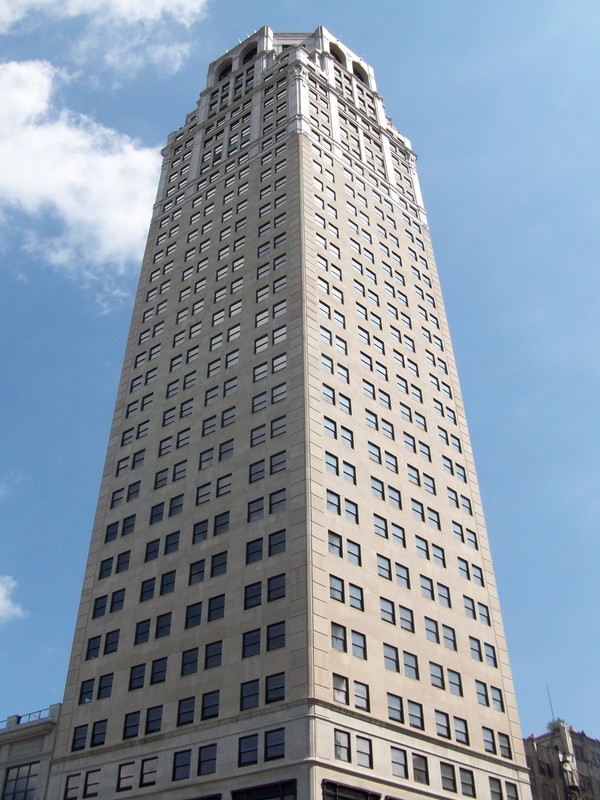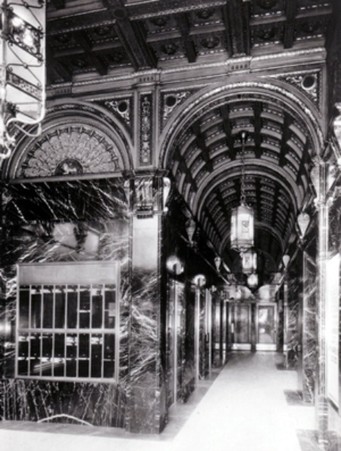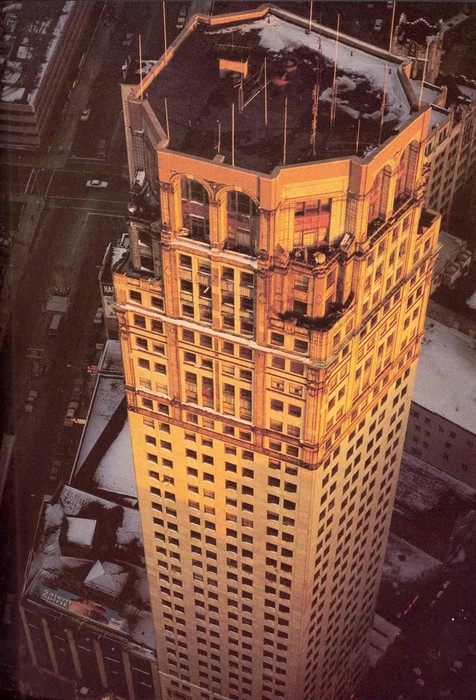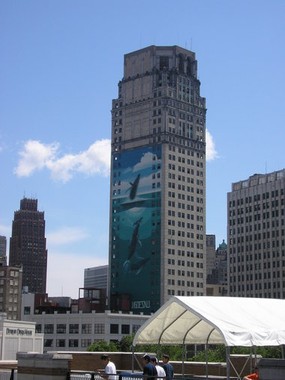Broderick Tower
Introduction
Text-to-speech Audio
One of Detroit's tallest skyscrapers, Broderick Tower opened in 1928. The building was commissioned by Berrien Eaton and opened as Eaton Tower prior to its sale in 1944. The 370-foot building housed shops and a popular restaurant on the lower levels and offices above. Like many other opulent structures built in the 1920s, Eaton Tower struggled to attract and maintain tenants during the Great Depression but became a center of Detroit's boom years from World War II through the 1960s. Mirroring the larger history of the city, Broderick Tower lost tenants as many Detroit businesses left the downtown area beginning in the 1970s. Much of the building was vacant for decades, but like the city itself, the owners of Broderick Tower have worked to attract new business and with some government support, has benefited from efforts to revive the downtown area. Between 2010 and 2012, parts of the building were renovated and converted into apartments as the first phase of the building owner's plan to revive this former downtown icon.
Images
Broderick Tower

This historic photograph show the interior of the building at mid-century

Broderick Tower was completely empty during for several decades. This photo shows the building at a time when there were no tenants

Whale mural on the side of the Broderick, completed in 1997 by artist Rober Wayland and a Detroit icon

Backstory and Context
Text-to-speech Audio
One of Detroit's tallest skyscrapers, the Broderick Tower opened in 1928. It was designed by architect Louis Kamper, who built several other important Detroit landmarks, and it was commissioned by Berrien Eaton, a member of one of Detroit's most well-established and influential families. Originally called Eaton Tower, the 370-foot building housed shops on the lower levels and offices above. It was particularly popular with medical professionals, and was occupied by dozens of doctor's offices. 1
The tower was renamed to the Broderick in 1944 when it came under new ownership. On the ground level, the Blazing Embers restaurant opened in the early 1950s and quickly became a Detroit institution.
However, through the 1970s, more and more tenants began moving out as Detroit's businesses suffered, and the building started to show its age. By 1985, it was completely vacant except for the Blazing Embers, which then closed in 1993. Various deals to renovate the space fell through over the next two decades.
Finally, in 2010, funding was secured to renovate the Broderick Tower into apartments. This was partly thanks to the resurgence of the area after the opening of the new Comerica Park, home of the Detroit Tigers, just next to the tower. Both the exterior limestone and much of the original historic interior were restored at a cost of $50 million. 100% of the 125 new apartments were leased before the grand reopening in November 2012.2
The tower was renamed to the Broderick in 1944 when it came under new ownership. On the ground level, the Blazing Embers restaurant opened in the early 1950s and quickly became a Detroit institution.
However, through the 1970s, more and more tenants began moving out as Detroit's businesses suffered, and the building started to show its age. By 1985, it was completely vacant except for the Blazing Embers, which then closed in 1993. Various deals to renovate the space fell through over the next two decades.
Finally, in 2010, funding was secured to renovate the Broderick Tower into apartments. This was partly thanks to the resurgence of the area after the opening of the new Comerica Park, home of the Detroit Tigers, just next to the tower. Both the exterior limestone and much of the original historic interior were restored at a cost of $50 million. 100% of the 125 new apartments were leased before the grand reopening in November 2012.2
Cite This Entry
Admin, Clio. "Broderick Tower." Clio: Your Guide to History. May 14, 2016. Accessed April 23, 2025. https://theclio.com/tour/2009/3
Sources
1. Austin, Dan. HistoricDetroit.org. http://historicdetroit.org/building/broderick-tower/
2.Muller, David. Five Days After Opening, Detroit's Broderick Tower Fully Leased. http://www.mlive.com/business/detroit/index.ssf/2012/11/five_days_after_opening_to_res.html

